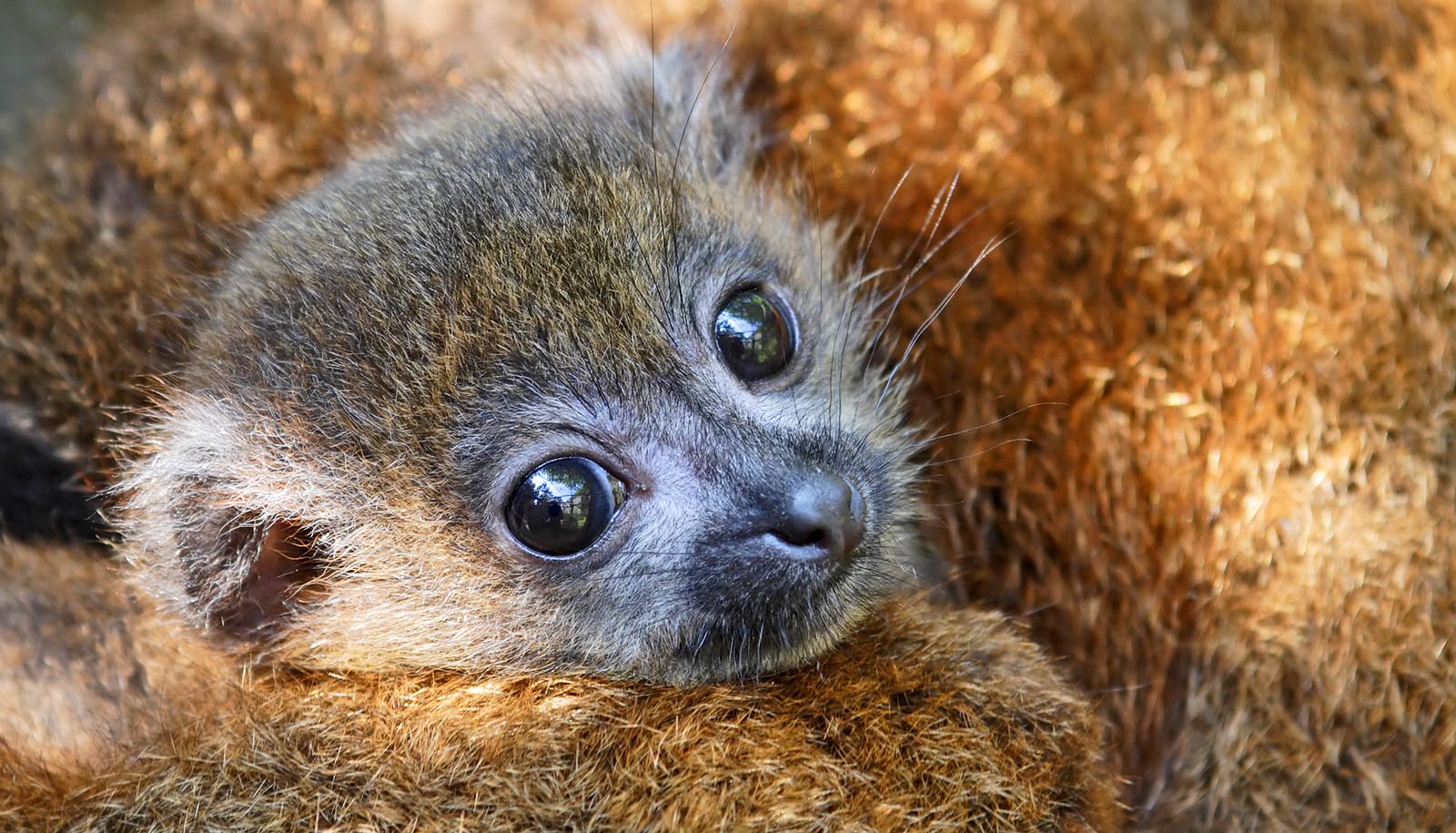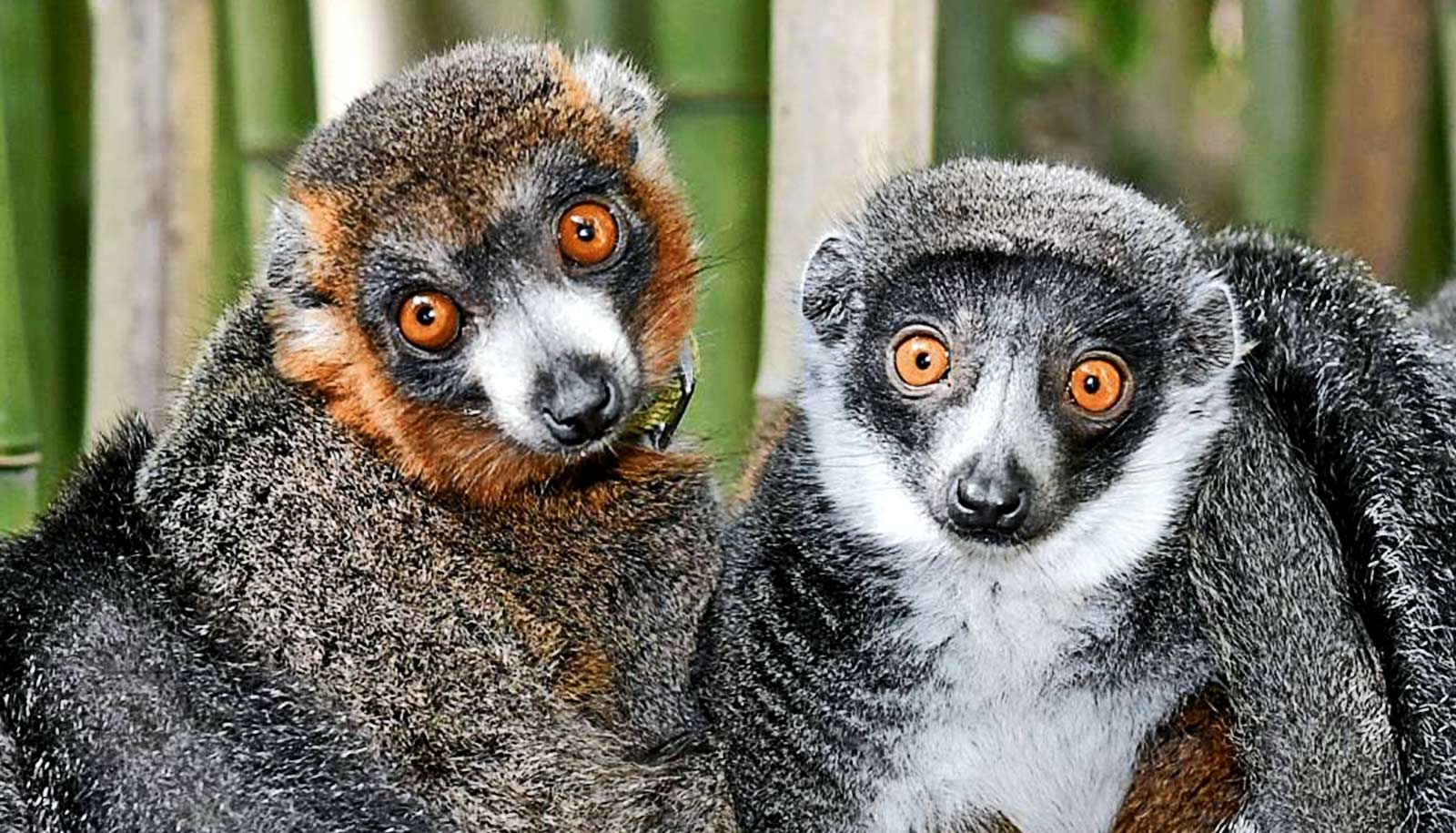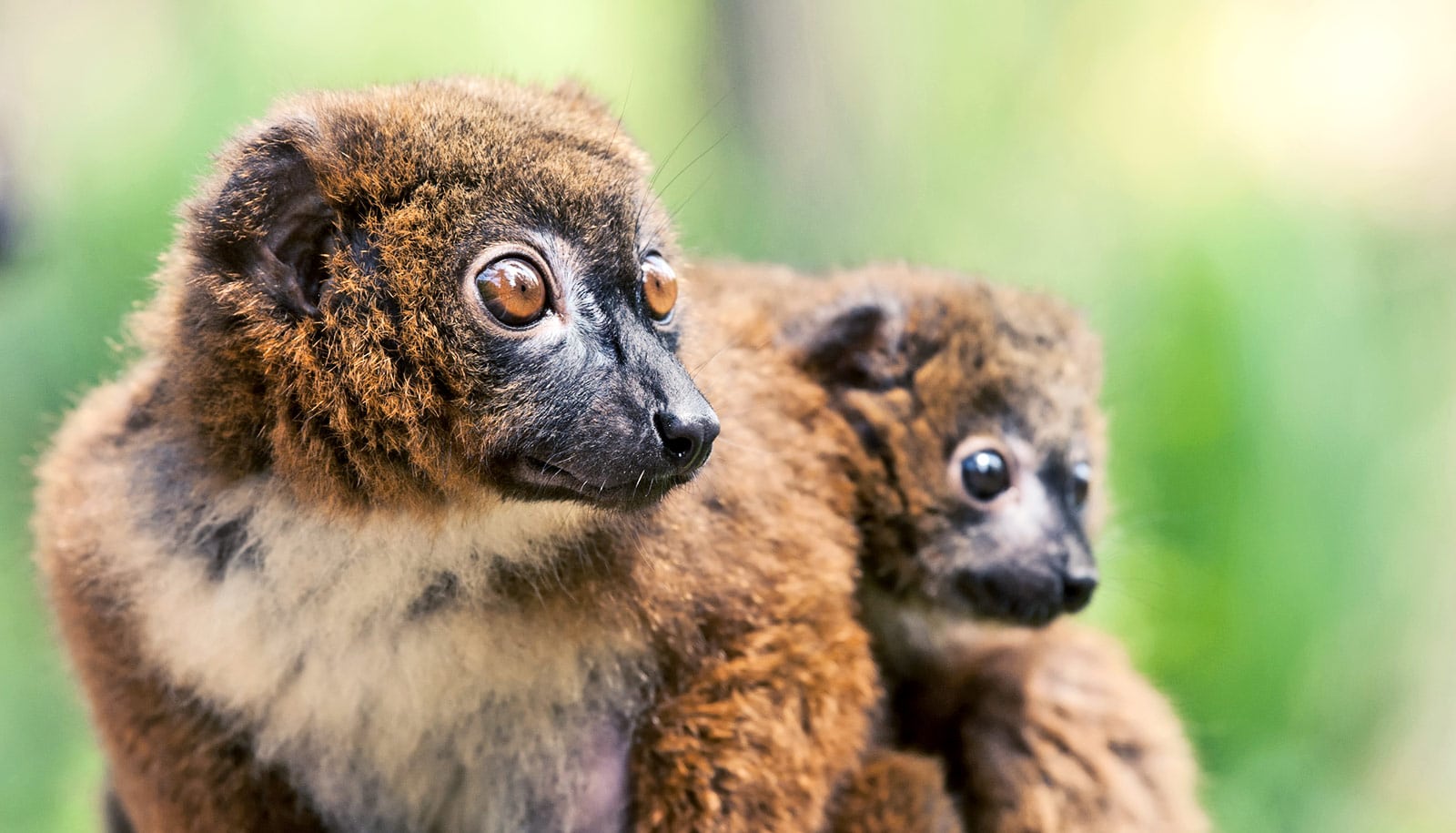Expectant lemur dads may experience hormonal changes during their mates’ pregnancies that help prepare them for parenting, a new study of their feces shows.
Red-bellied lemurs, one of only a handful of mammal species in which the males are active participants in caring for their young, are monogamous, tree-dwelling primates found throughout Madagascar’s eastern rainforests.
They live together in close family units, with offspring going off on their own at about three to four years old.
When a female is pregnant, her male partner sees a significant increase in estradiol—an estrogen steroid hormone and major female sex hormone that, in several mammalian species, is associated with increased maternal sensitivity and responsiveness.
The hormone spike mainly occurs in the third trimester of pregnancy, with lemurs’ typical gestation period lasting about 126 days, or a little over four months.
In that final trimester, males see a fourfold increase in estradiol, according to the new study, published in the journal Hormones and Behavior.
“Males, when they’re expecting, even when they’re not carrying the infant, are responding to the developing fetus,” says lead author Stacey Tecot, an associate professor of anthropology at the University of Arizona, who is also a member of the university’s BIO5 Institute. “I was shocked by how much of a change there is in estradiol when their partner is pregnant.”
Tecot and her colleagues suspect that the hormonal shift is part of nature’s way of preparing male lemurs for fatherhood.
“We were interested in estradiol because there have been some experimental lab studies with rodents showing it’s required for paternal care and it’s important for maternal care,” Tecot says. “We wanted to see if there are changes that occur in wild, male lemurs before infants are born, and whether levels of estradiol are associated with how much care they provide for their infants.”
Some dads are better than others
While the researchers did not observe a direct link between dads’ estradiol levels and the frequency of their specific infant parenting behaviors—which, in the lemur community, include holding, carrying, grooming, playing, and huddling—Tecot suspects that the spike in estradiol may occur to prepare the animals for the overall task of parenting.
“These hormonal changes may be priming them, preparing them to perform care,” Tecot says.
Lemur dads’ estradiol levels don’t immediately drop after birth, instead fluctuating up and down until the infant is weaned, the researchers found. Infants, regardless of when they are born, are all weaned in the spring when food in their natural habitat is more abundant.
To measure estradiol levels in expectant dads, Tecot and her colleagues collected fecal samples dropped by wild lemurs living in Ranomafana National Park in Madagascar. The droppings were dried by a fire and carefully stored in sealed plastic bags before being shipped to Tucson for analysis in Tecot’s Laboratory for the Evolutionary Endocrinology of Primates, housed in the School of Anthropology in the College of Social and Behavioral Sciences.
In addition to collecting fecal samples, the researchers also observed the wild lemurs’ behaviors and interactions and documented what they saw over a nearly two-year period spanning two reproductive seasons.
It’s worth noting that not all lemur dads showed themselves to be stellar parents, and just like in humans, there is variation in how involved they are. Tecot and her colleagues give thematic names to the different lemur families they observe, and in the “Authors” family, for example, a dad dubbed Tolstoy went above and beyond as a parent.
But, across the tree canopy in the Star Wars family, a dad they called Vader—true to his name—was much less exemplary. Tecot and her colleagues hope to learn more about what causes such variation and what role hormones might play.
Lemur pregnancy is a family affair
Red-bellied lemurs are among an estimated 5% of mammal species in which males share infant care responsibilities. And they aren’t the only species in which males seem to have a hormonal response to pregnancy and birth.
Previous research has shown that expectant human, tamarin monkey, and certain rodent fathers also undergo hormonal changes that appear to occur in response to their partners’ pregnancies. During the last trimester and shortly after the birth of an infant, cortisol, oxytocin, prolactin, and androgen levels have been found to change significantly in these species. However, estradiol has not been studied extensively in males, Tecot says.
Better understanding hormonal responses to pregnancy and birth in any species could shed new light on how moms and dads prepare for infant care, Tecot suggests.
“We put a lot of pressure on pregnant individuals as the influencers of infant outcomes instead of thinking about the environment, including everyone who interacts with them,” she says. “If male lemurs are interacting with the pregnant female and their hormones are responding, that suggests this is a group effort. Something is happening to both parents as they’re all preparing for the baby to arrive.”
Source: University of Arizona



